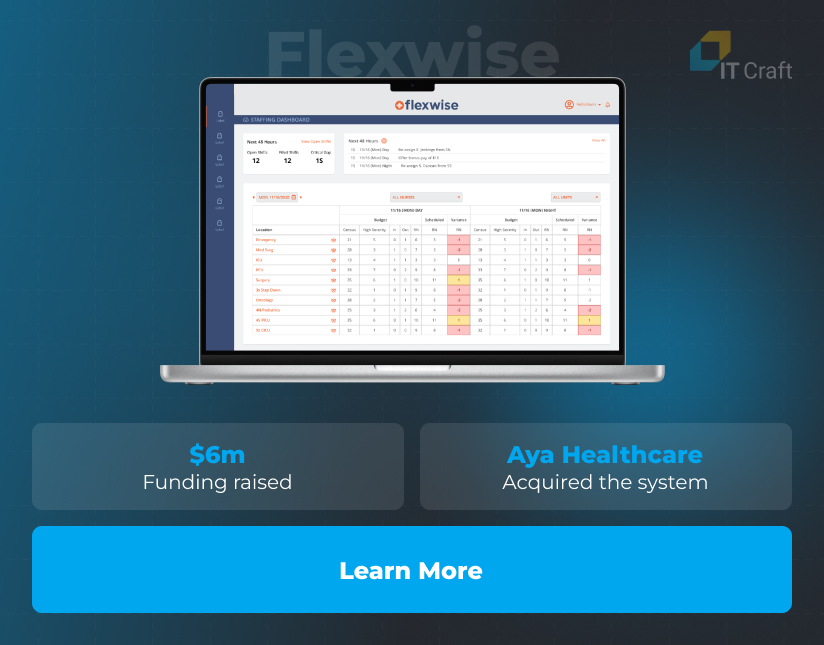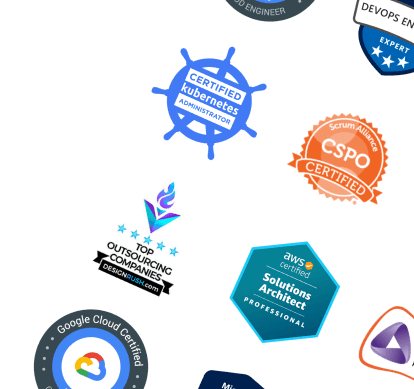Software is critical for an HR department’s efficiency, and 95% of HR professionals either already use technology for their work or plan to start using it.
You, as an organization, face a strategic decision here. You can implement a ready-made solution and pay regularly for subscriptions, support, tuning, integrations, and extras.
Or, you can use cost-effective HR software development services to build a system that meets your exact needs while saving on customization, upgrades, and expansion.
More importantly, you must decide on what type of HR solution you want to implement to optimize both your workflow and expenses:
- human resources information system (HRIS),
- human resources management software (HRMS), or
- human capital management (HCM)
Let’s examine the details and analyze the differences between the software organizations can use to manage HR-related activities.
1
What Is an HRIS?
A human resources information system (HRIS) contains core HR functionality associated with recruitment, compensation, organizational and absence management. It streamlines employee management by automating data processing and storage.
HR departments mostly use an HRIS solution. Still, it can contain self-servicing features that let employees update information on their own, decreasing the workload of HR managers. Understanding how to develop HRIS software properly is essential to creating a system that meets both user needs and organizational goals.
Benefits of an HRIS
Key benefits of using HRIS include:

Processes facilitation
HRIS consolidates employee-related data, ensuring it is always at hand in one place.
Increased productivity
HRIS solutions automate time-consuming processes, such as attendance tracking or payroll, increasing productivity across HR and bookkeeping departments.
Meeting compliance requirements
Organizations improve compliance with labor regulations while keeping information current based on provided deadlines and requirements.
Improved onboarding
HRIS software helps track candidates’ statuses, lets new hires add required documentation quickly, and decreases the time needed to start training.
2
What Is an HRMS?
Human resources management software (HRMS) is a more feature-rich software type than HRIS. In addition to functionality for core HR processes, HRMS enables workforce management throughout the entire employee cycle.
Besides performing day-to-day operations, HRMS’s advanced functionality helps HR departments focus on strategic tasks, such as talent management, employee engagement, goal planning, and more. Understanding how to build efficient hrms software solutions is key to developing HRMS tools that truly meet organizational needs and drive long-term success.
Benefits of an HRMS
Here are the benefits of HRMS implementation:

Cost reduction
Automation at scale enables organizations to improve control over operational expenses while optimizing expenditures on data entering, exchange, and processing.
Streamlined employee management
When apps and portals for employees are part of an HRMS suite, they help decrease paperwork, enabling line managers and employees to send updates and reports on the go.
Improved employee relationship
HRMS systems increase employee retention by letting them track and update data, keeping onboarding, training, and management processes transparent.
Advanced data analytics
Accumulated data lets organizations generate insights on improvement areas and growth opportunities and translate them into informed business decisions.
3
What Is HCM Software?
Human capital management (HCM) is an umbrella term for complex software solutions that emphasize employee experiences and maximize the ROI of human capital.
HCM HR software helps turn employee hiring and management into a strategic investment, enabling organizations to hire the best people for designated roles and helping unleash their talents.
Also, HCM solutions help bring organizational culture and processes to the next level while increasing productivity.
Benefits of HCM Software
Here is why organizations implement HCM suites:

Unification of complex HR processes
HCM solutions consolidate disparate HR functions within one cohesive system, providing real-time access to relevant data and insights on all organizational levels.
Increased quality of hires
HCM supports long-term hiring strategy by helping identify labor gaps and needs, determine required skills, and calculate talent acquisition costs.
Enhanced employee development
HCM systems help design, track, and adjust career development programs for hired talents, increasing employee satisfaction and involvement while reaching business goals.
Boosting employee’s efficiency
Organizations can improve internal mobility, find new roles for employees, assign them tasks where they can work with maximum efficiency, and provide tailored programs for up- and reskilling.
4
Differences between HRIS vs. HRMS vs. HCM
The three terms are sometimes used interchangeably, designating solutions that can contain different functionality with the same term. Still, the terms vary in depth of coverage of various HR functions.
HRIS software provides basic tools for managing core HR processes. HRMS expands HRIS’s capabilities, letting HR departments efficiently manage the entire employee lifecycle.
HCM software supports a strategic approach to HR activities, which is needed to drive business value from workforce investment.
HRIS vs. HRMS
Let’s compare HRIS systems to HRMS solutions. HRIS functionality is usually built on top of a database or several databases and focuses on collecting and processing quantitative metrics, such as work hours, sick leaves, payments, etc.
HRMS software systems add functionality and let HR departments efficiently manage employees and related data throughout the entire lifecycle, including application tracking, training, vacations, days off, and more.
HRIS vs. HCM
The comparison of HRIS to HCM is similar. While HRIS helps standardize HR tasks, its features and capabilities remain limited and may not be insightful when matching people to their roles.
The difference between HRIS vs. HCM is that the latter provides sophisticated functionality to dive deeply into a company’s hiring, management, feedback, and succession processes. This ensures the best matches between employees’ skills, ambitions, and roles.
HRMS vs. HCM
Comparing HRMS vs. HCM can be difficult because both have similar functionality. The difference is that HRMS is focused on various aspects of people management, and HCM is used to boost the strategy level.
Still, HRMS and HCM software functionalities can overlap or vary from vendor to vendor. Here is why an organization should check a specific feature list rather than look at the label.

Are you thinking of a custom combination of HR features?
Contact us for a free estimate. Let’s determine what is possible and how much implementing your idea can cost.
Contact Us
5
Similarities between HRIS vs. HRMS vs. HCM
While the difference lies in the focus, complexity, and sophistication of provided functionality, features, and functionality overlap to some extent and can be used for such tasks as:
- focus on improving HR processes and optimizing employee management
- provide core HR functionality for data management and administration
- manage time and payroll
- maintain employee records in a centralized manner
- offer automation functionality to boost the productivity of HR teams
- provide self-service options
HR departments can implement HRIS, HRMS, and HCM solutions when they need functionality for:
- recruitment
- training
- time management
- performance assessment
- payroll
- regulation compliance
6
How Do You Choose an HRIS, HRMS, or HCM Solution?
Because HRIS, HRMS, and HCM cater to business needs differently, deciding which should be implemented can require careful assessment of business needs, capabilities, and available offers.
Here are important points to consider when choosing an HR system:
Requirements list
Outline goals of implementing HR software and requirements for the future system. Estimate an implementation budget, necessary resources, and expected ROI. Examine the possible feature list and focus on the functionality that brings the most value.
Changes in organization processes
Consider organizational and cultural transformations to meet envisaged goals. Transformations can be small when choosing HRIS functionality and become increasingly complex when implementing an HCM solution.
Stakeholders’ approval
Discuss your plan with internal stakeholders and obtain approval to avoid possible resistance. Ensure everyone knows challenges, understands how a new system will help, and looks forward to improving processes.
Costs transparency
Pricing an HR solution can be confusing because several varying parameters can affect ownership costs (number of seats, purchased modules, monthly vs. annual contract, and more).
Ensure you understand what you pay for and get the functionality your team will use.
Ease of integrations
Focus on a product that provides easy data exchange with software your organization is already using (CRM, analytics, databases) to ensure the new solution will not become a bottleneck.
Some vendors might provide easy integrations only within their ecosystems.
System updates and support
Check user feedback on the vendor’s response to emerging issues and regularity of updates and improvements.
Avoid situations when everyone is shifting responsibility for an issue or when you wait indefinitely until your problem is settled with a system update because it is a low priority for the vendor.
Need to integrate disparate apps into one cohesive system?
Share your goals and requirements with us. Let’s design an efficient implementation for your HR needs.
Contact Us
7
Trends in HR, HRMS, and HCM Technologies
Emerging technologies help HR managers cope with intensifying internal processes, enabling a holistic view of challenges and opportunities, increased resilience and agility, and maintenance of employee-centric work environments.
The following tech trends increase HR software’s bottom line:
Cloud
Cloud computing is the key trend in custom software development. It enables project teams to deliver updates and improvements quickly to end users and make them available from anywhere.
Developers can also scale software efficiently, optimizing maintenance costs and user experiences.
Chatbots
Chatbots can improve communication between employees and HR departments by answering frequent questions, conducting simple transactions, and collecting employee feedback.
Mobile-first approach
According to HR statistics collected by G2, 47% of organizations are exploring opportunities to apply mobile technologies to HR activities.
Self-service mobile apps can boost employees’ and managers’ productivity by letting them enter and transmit required data quickly and effortlessly.
Hybrid workplace
An employee-centric approach requires developing hybrid workplaces where employees can work equally productively from home or any of the company’s offices.
Flexible architecture and tuning software settings ensure designated users have secure access to the required data and functionality.
8
IT Craft’s Expertise
IT Craft developers have acquired extensive expertise in assessing client requirements, planning, and delivering solutions that meet business needs.
Our teams work with projects of all sizes and at any stage of the life cycle, including:
- project discovery and prototypes
- HR software development from scratch
- software modernization
- technology updates
- software expansion to mobile platforms
- DevOps and maintenance
- AI integrations
To meet your specific challenges and limitations, you can hire a dedicated team that becomes your external IT department or select IT staff augmentation to meet your needs in narrow-focused expertise.

Flexwise
Flexwise is a healthcare management platform that helps clinic administrations forecast their staff needs, hire vetted professionals, and engage them efficiently.
How we helped
The IT Craft team divided the codebase into microservices and launched it in the cloud, ensuring optimal flexibility and scalability. These improvements enabled our team to efficiently handle system updates, expansion, and maintenance, helping the client grow their business.

!
Conclusion
Focusing on employee performance is the key to a company’s long-term success, and technology plays a central role in this process. We offer HRMS software development solutions that help streamline all HR operations, including payroll, recruitment, and performance management.
To boost performance with a relevant software implementation, you need to compare HRIS systems to HRMS and HCM solutions and determine how each can generate the best value:
- automate processes,
- require minimum learning time,
- support complex workflows,
- enable data entry on the go,
- increase engagement
and more.
It is also wise to calculate implementation and long-term ownership costs for specific functionality in advance and consider a custom-built system from scratch when an off-the-shelf solution is expensive in the long run.










